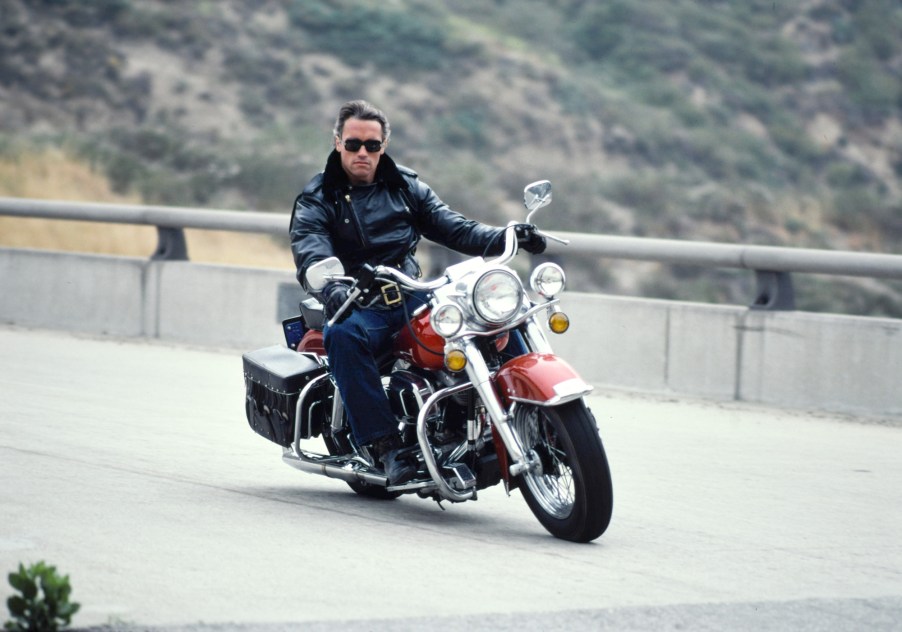
How Do You Corner Faster on a Motorcycle?
When you first learned how to ride motorcycles, you were excited to experience the thrill of the open road. Depending on how old you were when you started, you were probably equally eager to learn all the tricks and finesse required to navigate hills, blaze through straightaways, and hug those corners ever so tightly.
When it comes to motorcycle cornering, you might have learned one technique during your introductory rider course. But the veteran riders will tell you there’s more to hugging a turn properly. There’s a better way to turn a motorcycle. And these are the tips you need to see to help you lean into those turns safely and for the most exhilarating experience.
Body position and line of sight matter

Starting with your body position is best for the most effective motorcycle cornering. Before you reach your turn, lean slightly forward, with bent and relaxed arms, says Motorcycle News. Your elbows should be in line with your handlebars, lower than your shoulders. At this moment, you’ll also want to clinch the gas tank with your legs slightly.
Your visibility and line of sight will also play a significant role in controlling your body position. Don’t “drop your vision” or look at anything outside the approaching turn. Tilt your head upwards slightly, and try to point your chin toward your destination point through the other end of the corner. Ignore trees or anything else that might make you turn your head. Doing so could inadvertently affect your body position and complicate the turn.
What you need to know about counter-steering
Motorcycle enthusiasts often disagree about the best counter steering practices for the smoothest cornering. Ask about thoughts on motorcycle counter steering, positive steering, and active steering recommendations to see the wide variety of tips you receive. However, fundamental physics suggests engaging any technique that applies pressure to the inside bar is what makes the bike meld into the corner effectively.
Motorcycle News says to steer right, you’ll need to push forward on your right handlebar gently. The motorcycle will lean to the right, engaging the tire to the road, and enable the bend. You can also slightly pull back on the left handlebar if you need more of a lean at a quicker pace. The same applies for lefthand turns, applying pressure to the left and slightly pulling back on the right.
Picking your line
According to Canyon Chasers, it’s recommended that you enter your corners from the outside, not the middle line, and definitely not the inside line. One of the most significant reasons is that line will be more visible to you when you come in from a high point outside. Again, that line of sight will ensure a smooth transition through the corner.
The best way for motorcycle cornering with the least amount of risk means looking and thinking further ahead than the “two seconds” you might have been told in your rider class. Your lane is your limit, as Canyon Chasers describes. And you’ll be safer when you know your lines before you enter the corner.
Throttling and gear selection
Remember how everyone always told you to “accelerate through the turns?” There is truth to that, but it’s also slightly misleading. The idea is to maintain throttle from the entry point of the corner through the end of the curve. It’s not recommended that you do any coasting through turns. And it’s certainly not safe to coast part way and accelerate in the middle of a curve since sudden throttling could cause your tire to disconnect from the pavement.
TVS Motor suggests that riders should practice taking corners on those roads with which they’re already familiar. They also suggest motorcycle riders finish braking and gear-shifting before entering the corner. With a constant and smooth throttle input, you’ll find you can ease through every corner faster, too. You’ll enter the corner slightly slower and exit the corner faster, providing the ultimate motorcycle cornering ride. Conservative entrance speeds are the keys to faster, smoother, and safer motorcycle cornering.
Cornering a motorcycle will become easier as you practice on familiar roads. Consider these tips from fellow enthusiasts and look to incorporate best practices so you can reduce motorcycle accident risks and still enjoy the ride.


